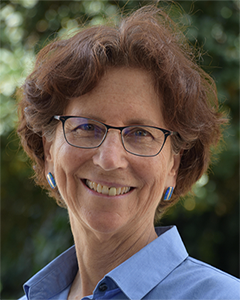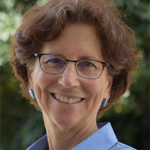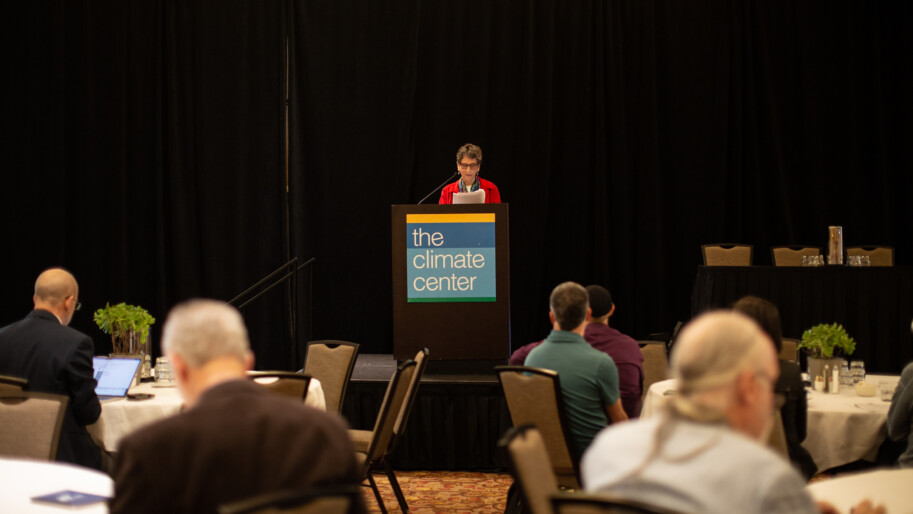On March 19, 2024, The Climate Center convened more than 350 climate activists, environmental justice advocates, state decision-makers, elected officials, business leaders, scientists, and policy experts for the third annual California Climate Policy Summit. Thank you to everyone who joined us! Together, we’ll continue building support for climate policy commensurate with what science demands.
Read here the opening remarks from Ellie Cohen, CEO of The Climate Center:
Welcome to the 2024 California Climate Policy Summit. It is so great to be with you all collaboratively building power for accelerated, equitable climate policy in California.
We all know: as goes California, so goes the world!
Policy is often the prisoner of politics. We are seeing too much of that in our country right now. But climate change is a matter of science — the chemistry, physics, and biology of our biosphere that we have so greatly altered. Climate change is happening to us regardless of politics. The vital signs of Mother Earth are not good.
- 2023 was the warmest year on record, with the last 12 months crossing a dangerous threshold, exceeding 1.5 degrees Celsius warming for the first time on record. And we just had the warmest February ever recorded, too, with a part of the month exceeding 2 degrees Celsius warming.
- Just last Friday, carbon dioxide in the atmosphere was up to a record-breaking 428 parts per million (pppm) for the first time in all of human history.
- Sea surface temperatures have risen to levels so literally off the charts for so many months in a row that scientists are stunned and worry about what this portends for our planetary system’s ability to sustain life as we know it.
- And we are fully into the sixth extinction — caused by human activities — destroying species, habitats, and whole ecosystems that are essential to maintaining a livable biosphere, buffering extremes, and regulating our climate.
We are perilously close to triggering dangerous global tipping points much more extreme than humanity has ever experienced.
This past year saw crazy, deadly extremes all over the world, like the “medicane” that flooded Greece and wiped out two-thirds of their crops last September. This Mediterranean hurricane, supercharged by superheated water temperatures, then turned to Libya, leaving at least 12,000 dead and missing by the next morning. Or the massive wildfires in Canada last summer and fall covering huge swaths of the country, resulting in dangerously polluted air that impacted at least 100 million people across North America.
In a few years, these will seem like the good old days.
We are on the precipice of a global climate breakdown. What we do here today and every day in Sacramento — and across the state — working together for accelerated, equitable climate action is more important than ever.
And now, difficult decisions must be made with a state budget deficit this year that could range from $38 to $73 billion depending on who you talk to.
A question for you — are we spending enough on equitable climate solutions for clean air, our health, and our future? No! There is no doubt about it, we are not!
Delay will be costlier and deadlier, with the worst consequences for our working-class communities, communities of color, and Indigenous communities.
The governor’s proposed budget includes cuts and deferrals in the climate budget of a whopping $4.7 billion. Not acceptable! We need these investments and more to secure the vibrant, climate-safe future we all strive for.
We must protect the full $54 billion climate budget signed into law in 2022! Protecting the climate budget is about:
- Investing in clean air that benefits everyone today;
- Clean water, food security, economic security, and healthy ecosystems;
- Equity: making sure that our frontline communities are better protected from worsening climate impacts and have access to climate solutions today;
- The 7 million Californians who live within one mile of active oil and gas wells, exposing them to toxic pollution and carcinogens today and every single day; and
- Ensuring a smooth and rapid transition to climate-friendly transportation and buildings that could save tens of billions of dollars through improved health and prevent thousands of deaths each year.
This is literally a matter of life and death. So, how do we protect multi-year climate budget investments? One key first step: we must stop all state subsidies and tax breaks to Big Oil. The governor’s $22 million in proposed cuts to oil and gas subsidies is a start, but not enough. There are hundreds of millions of dollars — perhaps billions — in the state budget benefiting Big Oil.
We also must end other dead-end investments in the state budget, like highway expansion funding that increases pollution and health impacts, does nothing to relieve congestion, and only makes us more reliant on dirty, polluting technologies. Let’s make sure these funds are used instead to support our transition to a clean, equitable, healthy energy future.
A new analysis that came out last week shows that California’s greenhouse gas emissions actually increased in 2021. Just to reach our low-bar goal of 40 percent emissions cuts by 2030, we now have to cut climate pollution by 4.6 percent every year until 2030.
So not only must we preserve the historic climate budget, we actually have to do much more. But to get where we need to go, we are going to have to take on one particular interest that keeps blocking our urgent goals: Big Oil.
Here in California — the “environmental” state — we are the third-largest refinery state and sixth-largest producer of crude oil. Big Oil has a stranglehold on our state decision-making.
In 2023, Big Oil spent $27 million on lobbying in California against everything we all collectively championed. And they are determined to keep profiting, producing, polluting, and pushing false climate solutions like carbon capture and storage.
What should they be doing? They should be cleaning up the mess they have created, like paying for and properly closing the more than 40,000 idle wells spewing methane gas and other pollutants. And they should be helping their workers transition to climate-friendly jobs.
Working together, we have to ensure a managed decline of the fossil fuel industry that ensures a smooth transition, providing new opportunities for workers and protecting consumers. We can do this working together!
As we move to electrify everything, we also have to take on Big Utility and their profit model so we can deploy more clean energy faster. This includes supporting local, clean, distributed energy by, for example, requiring that all electric vehicles (EVs) and electric buses sold in California have bidirectional charging capability.
Thank you Senator Nancy Skinner for SB 233. It is a “no-brainer,” as the LA Times Editorial Board wrote last year. Intermittent energy like solar and wind can then be stored in EV batteries and discharged when needed to power our homes and businesses when the electricity goes out, or provide power back to the grid when there is higher-than-usual demand, like during major heatwaves. This will also reduce reliance on and pollution from the roughly 80 gas peaker plants across the state, which are primarily located in working-class communities of color.
We have 1.8 million EVs in California today, with the capacity to store about 18 gigawatts (GW) of power. Compare that to the Diablo Canyon Nuclear Plant — our largest single source of electricity in the state — with a maximum output of about 2.2 GW. And by 2030, we’ll have about 8 million EVs with about 80 GW of storage — more than the highest-ever demand during the September 2022 heatwave.
Senator Skinner’s SB 233 would establish the foundation for making our electricity more affordable, reduce reliance on polluting gas peaker plants, and make new or secondhand EVs more affordable.
We need to enact other legislation to help move us towards a cleaner, more resilient, and reliable Grid for the Future, including:
- AB 2256 (Friedman), which will keep rooftop solar growing by establishing its true value, including all its environmental and societal benefits like clean air, clean water, and energy resilience.
- AB 3107 (Connolly), which would explicitly clarify that microgrids are not electrical corporations and thus not subject to CPUC regulation and oversight. So, microgrids that cross public streets must only get approval from local authorities.
What about funding and implementing laws we’ve already passed and that were signed by the governor: SB 253 (Wiener) and 261 (Stern) for corporate climate accountability?
We need to enact SB 252 (Gonzalez) to divest billions of public employees’ and teachers’ retirement funds from fossil fuels. We need to stop the revolving door out of the CPUC and CEC to the very businesses they regulate — which is what AB 2054 (Bauer-Kahan) would achieve — and stop allowing ratepayer dollars to be used for lobbying against ratepayer and climate interests, per SB 938 (Min). We need to support AB 1499 (Hart), which would require California’s largest oil operators to plug 20 percent of their idle wells every year.
We must also ensure we have a robust and equitable climate bond on the November ballot for clean air, resilient communities, healthy soils, food security, and more. We must pass a constitutional amendment that guarantees all Californians our right to clean air and water, ACA 16 (Bryan). We need to ensure that Big Oil’s lies don’t prevent the enactment of SB 1137 (Gonzalez) to establish health and safety zones around wells by actively supporting the ballot measure to keep the law the legislature passed.
And remember, the scientific prescription for getting back to a safe and stable climate requires not only cutting emissions in half by 2030, but also starting the drawdown — the removal — of hundreds of millions of tons of past climate pollution already in the atmosphere. That is a lot of carbon! It will take all the tools we have to get there, starting with major budget and bond investments in nature-based sequestration through healthy soils management, especially on agricultural lands, and climate-friendly habitat restoration and management. We will also reap their many co-benefits to help us cope with rapidly worsening extremes.
As Carl Sagan beautifully wrote when looking at a photo of Earth from deep space, “If you look at it, you see a dot. That’s here. That’s home. That’s us. On it, everyone you ever heard of, every human being who ever lived, lived out their lives … In all this vastness, there is no hint that help will come from elsewhere to save us from ourselves. It is up to us … to deal more kindly and compassionately with one another and to preserve and cherish that pale blue dot, the only home we’ve ever known.”
Working together we must and we will win! Thank you all!
The Climate Center’s Barry Vesser also contributed to these remarks.


